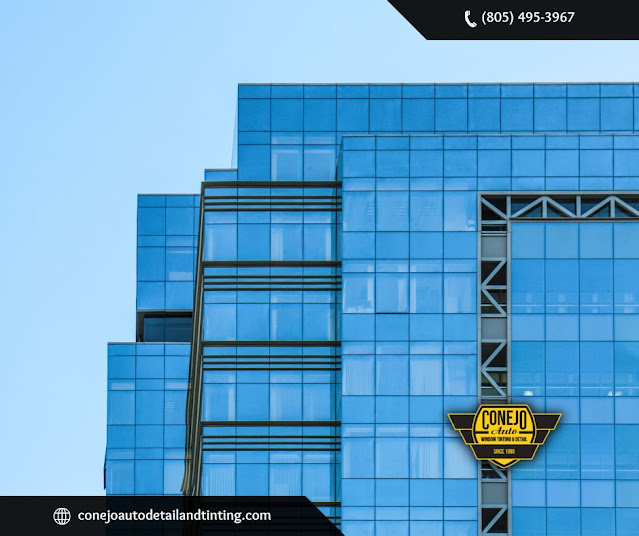The Benefits of Solar Control Film in Commercial Tinting
In the realm of commercial building management, the application of solar control film is increasingly recognized for its dual capacity to enhance energy efficiency and elevate workplace comfort. This film technology, employing either advanced non-metallic ceramic or reflective metalized coatings, strategically moderates solar heat gain, thereby reducing the reliance on HVAC systems—a critical factor in operational cost reduction. The implications of this are significant, not only in terms of direct energy savings but also in mitigating the environmental impact of commercial properties. Moreover, the reduction of glare and ultraviolet exposure contributes to an optimized work environment, which begs the question: what are the long-term impacts on productivity and health in workspaces equipped with solar control film?
Enhancing Energy Efficiency
Utilizing solar control film in commercial settings significantly enhances energy efficiency by reducing dependence on artificial cooling systems and minimizing solar heat gain. This innovative solution involves applying a micro-thin, retrofitted coating made from polyethylene terephthalate (PET) to the interior or exterior of window glass.
The film functions as a selective barrier, reflecting and absorbing
a substantial portion of incoming solar radiation, thereby reducing the heat
load on a building's cooling infrastructure. The application of solar control
films is particularly beneficial in geographic regions with high solar
exposure, where HVAC systems often operate continuously to maintain a
comfortable indoor environment.
By mitigating the amount of heat entering through windows, these
films decrease the operational frequency of these systems, thereby conserving
energy and significantly lowering utility costs. For instance, a study in a
commercial high-rise in Los Angeles showed a reduction in cooling-related
energy consumption by approximately 23% post-installation of solar control
films.
Moreover, this energy conservation contributes to a building's compliance with environmental standards and regulations, such as the LEED certification, which can enhance a company's marketability and community standing. These practical benefits demonstrate how solar control film is not only a financially savvy decision but also a community-oriented one, aligning with the values of sustainability and corporate responsibility.
Improving Workplace Comfort
Solar control films not only enhance energy efficiency but also
significantly improve workplace comfort by stabilizing indoor temperature
fluctuations and reducing glare on computer screens and other digital devices.
By mitigating direct sunlight exposure, these films maintain a
consistent ambient temperature throughout office spaces, circumventing the
discomfort of hotspots and cold drafts that characteristically plague
environments without such protective measures.
This technological solution employs advanced materials like
non-metallic ceramic or metalized coatings, which selectively filter
ultraviolet (UV) and infrared (IR) radiation, key contributors to solar heat
gain. As a result, employees experience fewer distractions from excessive light
and heat, fostering a more productive and serene workspace.
Consider, for example, an architectural firm where precision and
attention to detail are paramount; the use of solar control film can markedly
decrease the incidence of screen glare that often hampers the design process.
Moreover, the installation of these films is a proactive approach to
employee wellness. By shielding staff from harmful UV rays, companies
underscore their commitment to the health and well-being of their team, thus
enhancing a sense of belonging and loyalty.
In essence, solar control films serve not just as a utility for energy conservation but as a strategic asset in cultivating a supportive and conducive work environment.
In
conclusion, the integration of solar control film within commercial settings
not only underscores a commitment to sustainable energy practices but also
catalyzes a transformative impact on workplace dynamics.
As
the film mitigates solar heat and curtails energy expenditures, its broader
implications for enhancing occupational well-being and productivity are
profound.
The
strategic deployment of this technology promises a paradigm shift in building
management, where efficiency and employee comfort converge to redefine the
commercial landscape.
.webp)



Comentarios
Publicar un comentario